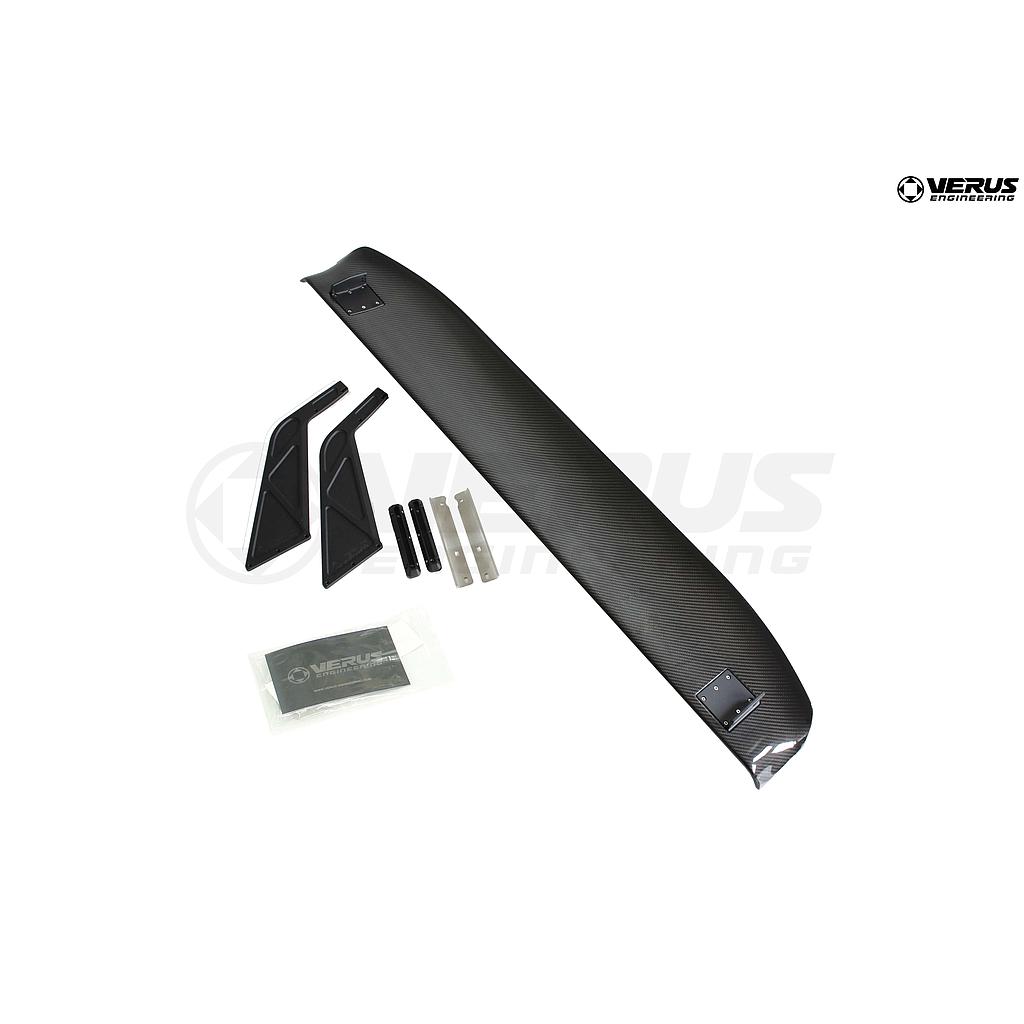High-Efficiency Rear Wing - BRZ/FRS/GT86







OVERVIEW
Verus Engineering started the rear wing design with a clean slate approach, utilizing our own airfoil profile created using ANSYS' adjoint solver. As a result, we were able to create a wing that is highly efficient while generating significant downforce appropriate for the typical track day goer and street enthusiast. By utilizing a swan neck mounting style, we were able to keep efficiency up by feeding the wing clean airflow, unlike typical bottom mount rear wings.
The low drag force produced by this wing is perfect for the ZN6/ZC6 chassis due to the limited horsepower the FA20 produces in stock form. This means corner speeds will increase without a large hit to straight-line top speed.
WHAT IS INCLUDED
- (1) Rear Wing Element Assembly
- (2) Uprights
- (2) Trunk Mount
- (2) Rear Wing Strengthening Bracket
- (1) Hardware Kit, Includes All Parts Necessary for a Seamless Install
FEATURES
Optimized Airfoil Using ANSYS Adjoint Solver
Improved Efficiency (L/D)
Reduced Drag
Increased Downforce
Bolts to OEM Trunk
Capable of Generating and Withstanding 300+lbs of Downforce
Properly Sized for Most off the Shelf Front Aero Solutions
SPECIFICATIONS
Carbon Fiber Rear Wing, with Carbon Nomex Infill
Billet Aluminum Mounts and Uprights
Recessed Mounting on Airfoil for Improved Aerodynamics
Uprights are Knife Edged on Rear and Rounded on Front for Improved Aerodynamics
Stainless Support Plate for Trunk
Stainless Hardware Throughout
SCIENCE
The Verus Engineering High-Efficiency Rear Wing was specifically designed for the FT86 enthusiast who wants more rear-end downforce for track days, while not decreasing gas mileage substantially or completely ruining straight-line top speeds on the track. The wing mounts were specifically placed in the strongest location on the trunk and then reinforced to help prevent trunk damage. The wing uprights were optimized using CFD and FEA to ensure the most efficient airflow in a straight line and yaw conditions while being strong enough to handle the loads from the wing.
Our CFD data and our real-world experimental data match up quite well. The wing hit all the major goals we set forth to achieve first in our CFD simulations and then with our real-world testing. The strong correlation between CFD data and real-world testing validates both our CFD analysis approach and the wing’s performance.











